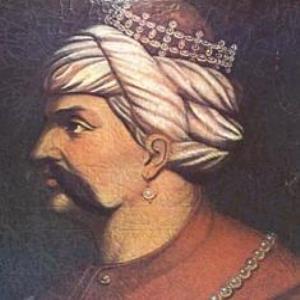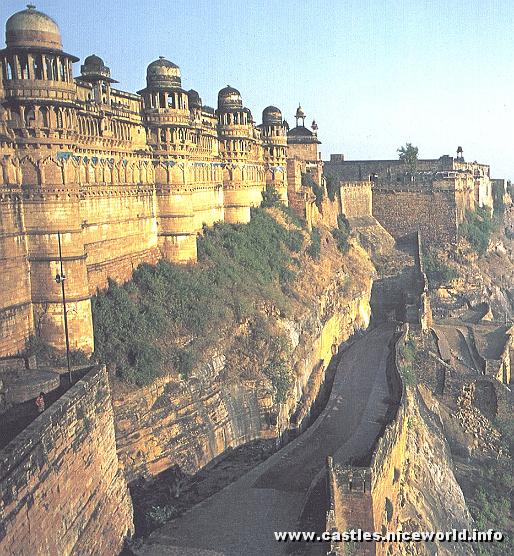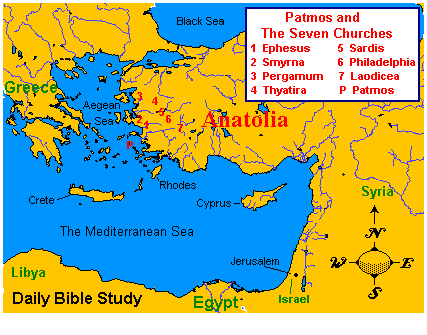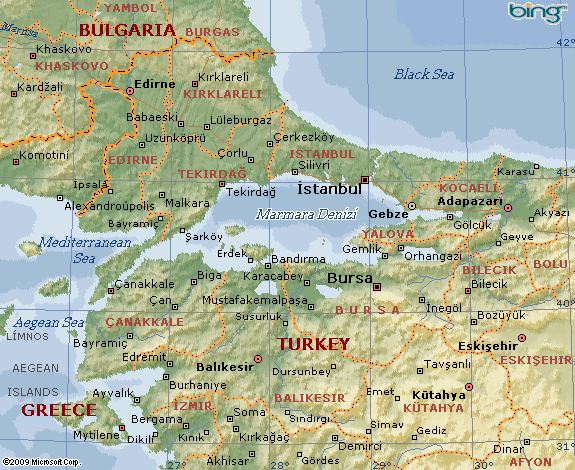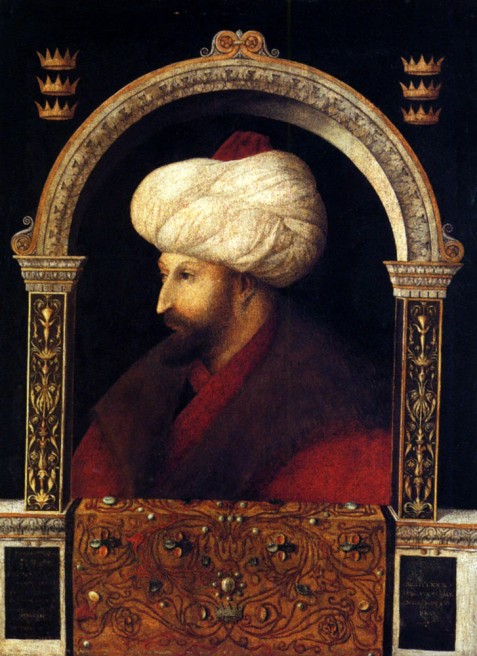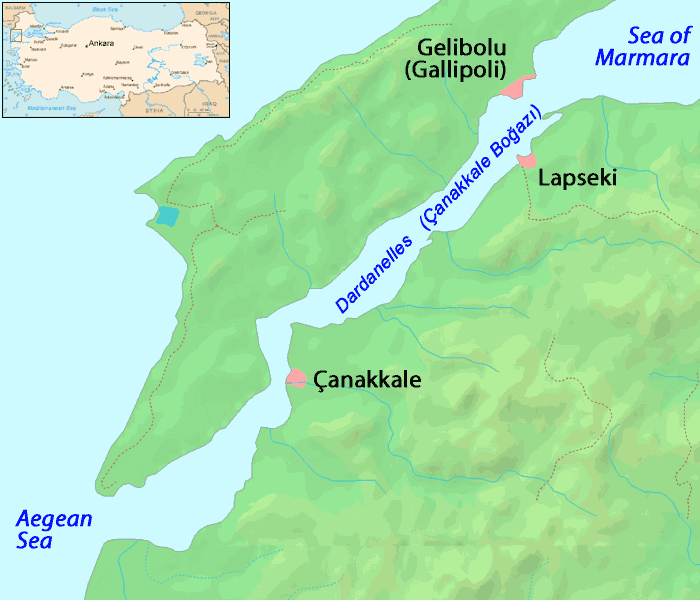Chapter 8 The Muslim Empires 1450-1800
-
The position of the sultanwas through _____________ .
-
Hereditary
-
Voted
-
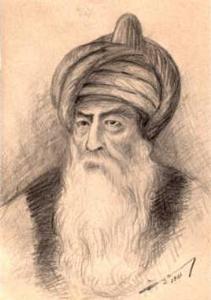
Three Muslim empires, each untied by the Islamic religion and its ruling dynasty, reached the height of their power at different times between 1450 and 1800. As discussed they were the Ottoman Empire, Mogul empire and Safavid Empire. Take up the quiz below and see how much you understood of Chapter 8 on the Muslim empires 1450-1800.
Quiz Preview
- 2.
A _______ is the person was who became the next sultan. He didn't have to be the ________.
-
Mother, first wife
-
Daughter, youngest
-
Son, eldest
Correct Answer
A. Son, eldestExplanation
The correct answer is "son, eldest". In the context of the question, it is referring to the succession of a sultan. Traditionally, the son who is the eldest would be the one to become the next sultan, regardless of the mother or any other wives or daughters. This is a common practice in monarchies where the eldest son inherits the throne.Rate this question:
-
- 3.
Like their predecessors, the Ottomans were ________________.
-
Baptist
-
Muslims
-
Catholics
-
Buddist
Correct Answer
A. MuslimsExplanation
The Ottomans were Muslims because the Ottoman Empire was founded by Osman I, who was a Muslim. The empire was ruled by a succession of sultans who were also Muslims. Islam was the dominant religion in the empire and played a significant role in shaping its culture, laws, and governance. The Ottomans built numerous mosques and promoted Islamic teachings and practices throughout their territories.Rate this question:
-
- 4.
A soldier in the elite guard of the Ottoman Turks
-
Ulema
-
Pasha
-
Janissary
Correct Answer
A. JanissaryExplanation
A janissary refers to a soldier in the elite guard of the Ottoman Turks. The janissaries were highly trained and loyal soldiers who served as the personal bodyguards of the Sultan. They were recruited from Christian boys who were converted to Islam and underwent rigorous training to become skilled warriors. The janissaries played a crucial role in the Ottoman Empire, serving as the Sultan's protectors and participating in military campaigns. They were known for their discipline, bravery, and effectiveness in battle, making them a formidable force in the Ottoman military.Rate this question:
-
- 5.
Where did the the Ottomans built a large empire in beginning in the fourteenth century?
-
Western Asia, North Africa, and parts of Europe.
-
Eastern Asia, South Africa and no parts of Europe
Correct Answer
A. Western Asia, North Africa, and parts of Europe.Explanation
The Ottomans built a large empire beginning in the fourteenth century in Western Asia, North Africa, and parts of Europe. This expansion allowed them to establish control over key trade routes and gain significant political and economic power in the region. They conquered territories such as Anatolia, the Balkans, Egypt, and the Levant, expanding their influence and establishing a centralized administration. This empire lasted for several centuries and had a lasting impact on the history and culture of the regions they ruled.Rate this question:
-
- 6.
To include or to contain means
-
Attend
-
Involve
-
Impact
-
Eventually
Correct Answer
A. InvolveExplanation
The word "involve" means to include or contain something. It suggests that there is a connection or participation of some sort. It implies that there is a level of engagement or participation in a particular activity or situation.Rate this question:
-
- 7.
The Ottomans' greatest artistic contribution was the building of magnificent ____________.
-
Horses
-
Mosques
-
Homes
-
Canons
Correct Answer
A. MosquesExplanation
The Ottomans' greatest artistic contribution was the building of magnificent mosques. Mosques were not only places of worship but also served as centers of education, social gatherings, and political activities. The Ottomans invested great effort and resources into constructing mosques with intricate architectural designs, beautiful calligraphy, and stunning interiors. These mosques became iconic symbols of Ottoman power and cultural identity, showcasing their artistic and architectural prowess.Rate this question:
-
- 8.
The Ottoman sultan's chief minister, who led the meetings of the imperial council
-
Sultan
-
Grand vizier
-
Pasha
Correct Answer
A. Grand vizierExplanation
The grand vizier was the chief minister of the Ottoman sultan and was responsible for leading the meetings of the imperial council. The grand vizier held significant power and authority, acting as the sultan's right-hand man and overseeing the administration of the empire. This position was crucial in the Ottoman government, as the grand vizier played a key role in decision-making and policy implementation.Rate this question:
-
- 9.
How did the problems in the Ottoman Empire may have begun during the reign of Suleyman the Magnificent.
-
Empire lose some of its territory and internal problems in the 1699
-
Women wanted the right to vote
-
Slaves got their freedom
Correct Answer
A. Empire lose some of its territory and internal problems in the 1699Explanation
During the reign of Suleyman the Magnificent, the Ottoman Empire may have started experiencing problems due to the loss of some of its territory and internal issues that arose in 1699. This loss of territory could have weakened the empire's power and resources, making it vulnerable to further challenges. Additionally, internal problems such as political instability, economic struggles, or social unrest may have contributed to the difficulties faced by the empire during this time.Rate this question:
-
- 10.
In the 4th century, the Ottoman Tusks expanded the
-
Balkans
-
France
-
Africa
-
Japan
Correct Answer
A. BalkansExplanation
The correct answer is Balkans. In the 4th century, the Ottoman Turks expanded their empire into the Balkans. This expansion allowed them to gain control over various territories in southeastern Europe, including parts of present-day Greece, Bulgaria, Serbia, and Romania. The Ottoman Empire's presence in the Balkans had a significant impact on the region's history, culture, and politics, shaping the development of the Balkan countries for centuries to come.Rate this question:
-
- 11.
Another name for a harem is __________.
-
"sacred palace"
-
"happy palace"
-
"safe palace"
Correct Answer
A. "sacred palace"Explanation
A harem is a term used to describe the living quarters of women in a polygamous household or the wives and concubines of a monarch. It is often associated with a sense of exclusivity and privacy. The term "sacred palace" aligns with this concept as it suggests a place that is revered, holy, and restricted to certain individuals. It implies that the harem is a sacred space reserved for the women in the household or the monarch's intimate partners.Rate this question:
-
- 12.
To make a significant or major effect
-
Eventually
-
Impact
-
Involve
-
Central
Correct Answer
A. ImpactExplanation
The word "impact" is the correct answer because it means to make a significant or major effect. It is often used to describe the result or consequence of an action or event. In this context, "impact" suggests that something has had a significant effect or influence on a situation or outcome. The other options, "eventually," "involve," and "central," do not convey the same meaning as "impact" in relation to making a significant effect.Rate this question:
-
- 13.
The Ottomans were generally tolerant of ______________, some of whom converted to Islam.
-
Slaves
-
Pick pockets
-
Illegal acts
-
Non-Muslims
Correct Answer
A. Non-MuslimsExplanation
The Ottomans were generally tolerant of non-Muslims, some of whom converted to Islam. This suggests that the Ottoman Empire allowed religious freedom and did not discriminate against individuals based on their religious beliefs. The fact that some non-Muslims converted to Islam indicates that there was a level of acceptance and assimilation within the empire. This tolerance towards non-Muslims may have contributed to the cultural diversity and religious pluralism that characterized the Ottoman Empire.Rate this question:
-
- 14.
________________ were converted to Islam and trained as foot soldiers or administrators to serve the sultan.
-
Pashas
-
Ulemas
-
Janisssaries
-
Sultans
Correct Answer
A. JanisssariesExplanation
Janissaries were converted to Islam and trained to serve the sultan as foot soldiers or administrators. They were an elite military unit in the Ottoman Empire, consisting of Christian boys who were taken as slaves, converted to Islam, and then trained extensively in warfare and administration. The Janissaries played a significant role in the empire's military campaigns and were known for their loyalty to the sultan.Rate this question:
-
- 15.
-
Selim I
-
Sinan
-
Mehmet II
Correct Answer
A. Sinan -
- 16.
Who came into power in Persia and Central Asia, while the Moguls unified India in the sixteenth century?
-
Gurion came to power in Persia and Central Asia, while the Moguls unified India.
-
Ying-Hsing came to power in Persia and Central Asia, while the Moguls unified India.
-
Buddha came to power in Persia and Central Asia, while the Moguls unified India.
-
Safavids came to power in Persia and Central Asia, while the Moguls unified India.
Correct Answer
A. Safavids came to power in Persia and Central Asia, while the Moguls unified India.Explanation
In the sixteenth century, the Safavids came into power in Persia and Central Asia. They established the Safavid Empire, which was known for its Shia Muslim rulers and their efforts to spread Shia Islam. At the same time, the Mughals unified India under their rule. The Mughal Empire, led by Emperor Babur and his successors, brought stability and prosperity to India through their strong centralized government and cultural achievements. Therefore, the Safavids came to power in Persia and Central Asia, while the Mughals unified India.Rate this question:
-
- 17.
The Pashas were directly responsible to the sultan's court at _____________.
-
Balkans
-
Constantinople
-
Ulemas
Correct Answer
A. ConstantinopleExplanation
The Pashas were directly responsible to the sultan's court at Constantinople. Constantinople was the capital of the Ottoman Empire and the political center where the sultan's court was located. The Pashas, who were high-ranking officials and military commanders, reported directly to the court in Constantinople, making it the correct answer. The Balkans refers to a geographical region and the Ulemas were Islamic scholars, neither of which were directly responsible to the sultan's court.Rate this question:
-
- 18.
"sacred place," the private domain of an Ottoman sultan, where he and his wives resided
-
Harem
-
Ulema
-
Palace
Correct Answer
A. HaremExplanation
The correct answer is "harem." In the context of the given description, a harem refers to a "sacred place," which was the private domain of an Ottoman sultan and where he and his wives resided. The harem was a secluded area within the palace where the sultan's wives, concubines, and female relatives lived. It was strictly off-limits to outsiders and served as a symbol of the sultan's power and wealth.Rate this question:
-
- 19.
A group of religious advisers to the Ottoman sultan; this group administered the legal system and schools for educating Muslims
-
Ulema
-
Priest
-
Sinan
Correct Answer
A. UlemaExplanation
The ulema were a group of religious advisers to the Ottoman sultan. They were responsible for administering the legal system and overseeing the education of Muslims. They played a significant role in shaping and maintaining the religious and legal framework of the Ottoman Empire. The term "priest" is not an accurate description of the ulema, as they held a different role and function within the Ottoman society. Sinan, on the other hand, is not relevant to the given question and answer.Rate this question:
-
- 20.
The private domain of the sultan and his wives were known as the
-
Ulema
-
Grand vizer
-
Pasha
-
Harem
Correct Answer
A. HaremExplanation
The private domain of the sultan and his wives is known as the harem. The harem was a secluded area of the palace where the sultan's wives, concubines, and female relatives lived. It was strictly off-limits to outsiders and was guarded by eunuchs. The harem served as a symbol of the sultan's wealth, power, and status. It was also a place where political intrigue and power struggles among the women took place.Rate this question:
-
- 21.
The central government appointed officials, called ____________.
-
Pashas
-
Slaves
-
Sultans
-
Dukes
Correct Answer
A. PashasExplanation
The correct answer is "pashas." Pashas were officials appointed by the central government. They held administrative and military positions in the Ottoman Empire. They were responsible for governing provinces, collecting taxes, and maintaining order. Pashas were chosen based on their loyalty and competence. They played a crucial role in the functioning of the empire and were instrumental in implementing the policies of the central government.Rate this question:
-
- 22.
After the death of ____________ , sultans became less involved in government and allowedtheir ministers to exercise more power.
-
Suleyman
-
Princess
-
Vizer
-
Pasha
Correct Answer
A. SuleymanExplanation
After the death of Suleyman, the sultans became less involved in government and allowed their ministers to exercise more power.Rate this question:
-
- 23.
After the Ottoman Turks conquered a new region, they usually __________
-
Administered it through a local ruler who was responsible to the sultan’s court in Constantinople.
-
Sent administrators from Constantinople.
-
Left military officers in charge.
-
Left the administration to the discretion of local rulers.
Correct Answer
A. Administered it through a local ruler who was responsible to the sultan’s court in Constantinople.Explanation
After the Ottoman Turks conquered a new region, they usually administered it through a local ruler who was responsible to the sultan’s court in Constantinople. This means that the Ottoman Turks would appoint a local leader to govern the newly conquered region on their behalf. This allowed the Ottomans to maintain control over the region while also delegating some of the administrative responsibilities to a trusted local ruler. By doing so, the Ottomans were able to effectively govern their vast empire and ensure loyalty from the local population.Rate this question:
-
- 24.
An empire formed by ouside conquerors who unified the regions that they conquered throughtheir mastery of fireworks
-
Pasha
-
Harem
-
Conqueriors
-
Gunpowder empire
Correct Answer
A. Gunpowder empireExplanation
The correct answer is "gunpowder empire". This term refers to an empire that was formed by outside conquerors who were able to unify the regions they conquered through their mastery of gunpowder and firearms. Gunpowder technology gave these conquerors a significant military advantage, allowing them to successfully conquer and control vast territories. This term is often used to describe empires such as the Ottoman Empire, Safavid Empire, and Mughal Empire, which all utilized gunpowder technology in their military campaigns.Rate this question:
-
- 25.
-
Makkah
-
Bosporus
-
Anatolian
Correct Answer
A. Makkah -
- 26.
The Ottoman Turks used _________ to beat the Byzantine Empire.
-
Crossbow
-
Pashas
-
Battleships
-
Cannons
Correct Answer
A. CannonsExplanation
The Ottoman Turks used cannons to beat the Byzantine Empire. Cannons were a powerful weapon during that time period and gave the Ottomans a significant advantage in warfare. The use of cannons allowed the Ottomans to breach the walls of the Byzantine Empire's fortifications, leading to their eventual conquest. Cannons were able to cause destruction from a distance, making them an effective tool in siege warfare.Rate this question:
-
- 27.
The greatest contribution of the Ottoman Empire to world art was in __________
-
Textiles.
-
Pottery.
-
Architecture.
-
Jewelry.
Correct Answer
A. Architecture.Explanation
The Ottoman Empire made its greatest contribution to world art in architecture. The empire's architectural style was a fusion of various influences, including Byzantine, Persian, and Islamic elements. Ottoman architecture is characterized by its grandeur, intricate designs, and innovative use of domes and arches. Some of the most iconic examples of Ottoman architecture include the Hagia Sophia in Istanbul and the Süleymaniye Mosque. These architectural marvels not only showcased the empire's power and wealth but also left a lasting impact on the development of architectural styles in the region and beyond.Rate this question:
-
- 28.
The sultan sat behind a screen and privately indicated his desires to the _____________.
-
Son
-
Queen
-
Grand vizer
-
Servants
Correct Answer
A. Grand vizerExplanation
In this scenario, the sultan is sitting behind a screen, indicating that he wants privacy. The grand vizer is a high-ranking official in the sultan's court and is trusted to handle important matters on behalf of the sultan. Therefore, it is logical to assume that the grand vizer would be the one to receive and fulfill the sultan's desires in this private setting.Rate this question:
-
- 29.
From their location in the northwestern corner of the peninsula, the Ottomans expandedwestward and eventually controlled ________________ and ___________.
-
Deccan and Pass
-
Akbar and Bengal
-
Calcutta and Shan
-
Bosporus and the Dardanelles
Correct Answer
A. Bosporus and the DardanellesExplanation
The correct answer is Bosporus and the Dardanelles. The Ottomans, starting from their location in the northwestern corner of the peninsula, expanded westward and eventually gained control over the strategic waterways of Bosporus and the Dardanelles. These waterways connect the Mediterranean Sea to the Black Sea and were crucial for the Ottomans to secure their trade routes and maintain control over their empire.Rate this question:
-
- 30.
-
Sinan
-
Mehmet
-
Selim I
Correct Answer
A. Selim I -
- 31.
After a long or undertermined period of time.
-
Involved
-
Impact
-
Eventually
Correct Answer
A. Eventually -
- 32.
Which of the following did NOT apply to non-Muslims in the Ottoman system?
-
They had to pay a tax.
-
They had to convert to Islam.
-
They were allowed to practice their religion.
-
In some areas, large numbers converted to the Islamic faith.
Correct Answer
A. They had to convert to Islam.Explanation
In the Ottoman system, non-Muslims were required to pay a tax, which was known as the jizya. They were allowed to practice their own religion, and in some areas, many non-Muslims converted to Islam. However, the statement that they had to convert to Islam is incorrect. Non-Muslims were not forced to convert to Islam in the Ottoman Empire.Rate this question:
-
- 33.
Ottoman rulers clam the title of ___________ and began to build a strong military by developing an elite guard called janissaries.
-
Ulema
-
Grand vizer
-
Sultan
Correct Answer
A. SultanExplanation
The correct answer is "sultan". Ottoman rulers claimed the title of sultan and began to build a strong military by developing an elite guard called janissaries. The sultan was the supreme ruler and held significant political and military power in the Ottoman Empire. The janissaries were an important part of the Ottoman military and served as an elite infantry force, known for their loyalty and discipline.Rate this question:
-
- 34.
-
The Topkapi Palace
-
The Fortress of Gwalior in India
Correct Answer
A. The Topkapi PalaceExplanation
The Topkapi Palace is a historical landmark located in Istanbul, Turkey. It was the primary residence of the Ottoman sultans for nearly 400 years. The palace is renowned for its stunning architecture, intricate tilework, and extensive collections of art, jewelry, and artifacts. It served as the administrative and ceremonial center of the Ottoman Empire and is now a popular tourist attraction, offering visitors a glimpse into the opulent lifestyle of the sultans. The Topkapi Palace is an iconic symbol of Istanbul's rich history and cultural heritage.Rate this question:
-
- 35.
Under the leadership of ______________, the Ottoman defeated the Byzantine Empire.
-
Mehmet II
-
Selim I
-
Osman
-
Sinan
Correct Answer
A. Mehmet IIExplanation
Mehmet II is the correct answer because he was the Ottoman leader who successfully defeated the Byzantine Empire. He is known for his conquest of Constantinople in 1453, which marked the end of the Byzantine Empire and the beginning of the Ottoman Empire. Mehmet II's military strategies and determination played a crucial role in the Ottoman victory, making him a significant figure in Ottoman history.Rate this question:
-
- 36.
The decline of the Mogul Empire was hastened by the arrival of __________ traders in India.
-
Turkish
-
British
-
Persian
-
French
Correct Answer
A. BritishExplanation
The decline of the Mogul Empire was hastened by the arrival of British traders in India. The British East India Company established a strong presence in India during the 18th century, gradually gaining control over various regions. They exploited the weakening Mogul Empire and engaged in trade, which eventually led to political and economic dominance. The British implemented policies that disrupted the existing socio-political structure, exploited resources, and undermined local industries. This ultimately contributed to the decline of the Mogul Empire and the establishment of British colonial rule in India.Rate this question:
-
- 37.
-
Dardanelles
-
Sea of Marmara
-
Bosporus
-
Anatolian Peninsula
Correct Answer
A. Anatolian Peninsula -
- 38.
-
Sea of Marmara
-
Makkah
-
Byzantime
Correct Answer
A. Sea of Marmara -
- 39.
The sultan controlled his bureaucracy through an __________________ that met four days a week.
-
Imperial council
-
Grand council
-
Sultan council
Correct Answer
A. Imperial councilExplanation
The correct answer is "imperial council." The term "imperial" suggests that the council is associated with the authority and power of the sultan. By controlling his bureaucracy through this council, the sultan can effectively manage and oversee the affairs of the state. The fact that the council meets four days a week indicates its regularity and importance in the governance of the empire.Rate this question:
-
- 40.
Why did problems begin to occur after the Ottoman Empire reached its high point under Süleyman?
-
Süleyman killed his two most able sons.
-
Sultans became less involved in government.
-
The central bureaucracy lost its links with rural areas.
-
All of the above
Correct Answer
A. All of the aboveExplanation
After Süleyman, the Ottoman Empire faced various problems due to a combination of factors. Firstly, Süleyman's decision to kill his two most able sons created a succession crisis and weakened the empire's leadership. Secondly, the sultans became less involved in government affairs, leading to a lack of effective governance and decision-making. Lastly, the central bureaucracy lost its connections with rural areas, resulting in a breakdown of communication and administration. All of these factors contributed to the occurrence of problems after the Ottoman Empire reached its high point under Süleyman.Rate this question:
-
- 41.
-
Sultan Selim I
-
Mehmet II
-
Sinan
Correct Answer
A. Mehmet II -
- 42.
The sultan is the "holder of the power" the military and politial head of state under the___________________ and the Ottomans.
-
Akbar Turk
-
Seljuk Turks
-
Mongul Turks
Correct Answer
A. Seljuk TurksExplanation
The correct answer is Seljuk Turks. The Seljuk Turks were a powerful dynasty that ruled over a vast empire, including parts of modern-day Turkey, Iran, Iraq, and Syria, from the 11th to the 13th centuries. The sultan, as the "holder of power," was both the military and political head of state under the Seljuk Turks. This position gave the sultan significant authority and control over the empire's affairs, making them the ultimate decision-maker and leader of the state.Rate this question:
-
- 43.
During the reign of Shah Abbas, the Safavid dynasty __________
-
Reached its height.
-
Relied heavily on relatives to administer the empire.
-
Lost Azerbaijan to the Ottoman Turks.
-
Began to decline.
Correct Answer
A. Reached its height.Explanation
During the reign of Shah Abbas, the Safavid dynasty flourished and achieved its peak. This implies that under Shah Abbas' rule, the dynasty experienced a period of great success and prosperity.Rate this question:
-
- 44.
-
Balkans
-
Sea of Mamara
-
Dardanelles
Correct Answer
A. Dardanelles -
- 45.
The Ottoman rulers preferred to administer their conquered regions through ______________.
-
Doing it themselves
-
Long distant rulers
-
Local rulers
-
Usuing the queen
Correct Answer
A. Local rulersExplanation
The Ottoman rulers preferred to administer their conquered regions through local rulers. This allowed them to maintain control over the territories while also benefiting from the knowledge and expertise of those who were already familiar with the local customs and governing systems. By appointing local rulers, the Ottoman rulers could effectively govern their vast empire and ensure stability and loyalty among the population. Additionally, this approach helped to minimize resistance and rebellion from the conquered regions, as the local rulers were often seen as more legitimate and representative of the local population.Rate this question:
-
- 46.
Sultans often had __________ wives as his favorite.
-
6
-
3
-
4
Correct Answer
A. 4Explanation
Sultans often had 4 wives as his favorite.Rate this question:
-
- 47.
An appointed official in the Ottoman Empire who collected taxes, maintained law and order, andwas directly responsible to the sultan's court
-
Vizer
-
Sultan
-
Pasha
Correct Answer
A. PashaExplanation
A pasha was an appointed official in the Ottoman Empire who had various responsibilities such as collecting taxes, maintaining law and order, and reporting directly to the sultan's court. The term "pasha" was used to refer to high-ranking officials in the Ottoman government, and they held significant power and authority in their respective regions or provinces. They played a crucial role in the administration and governance of the empire, ensuring the smooth functioning of the state and the implementation of the sultan's policies.Rate this question:
-
- 48.
The impact on the Ottoman rule on the peoples of ______________ was relatively light.
-
South Africa
-
West Africa
-
North Africa
-
East Africa
Correct Answer
A. North AfricaExplanation
The impact of Ottoman rule on the peoples of North Africa was relatively light. This could be attributed to several factors, such as the distance between the Ottoman Empire and North Africa, which limited direct control and influence. Additionally, North Africa already had well-established and powerful local dynasties, such as the Mamluks in Egypt, which maintained a degree of autonomy. The Ottomans mainly focused on securing trade routes and collecting taxes rather than imposing major political or cultural changes on the region.Rate this question:
-
- 49.
After the death of Süleyman the Magnificent, corruption and palace intrigue spread, and ________ depleted the Ottoman treasury.
-
Wars
-
Robbers
-
Slaves
-
Vaziers
Correct Answer
A. WarsExplanation
After the death of Süleyman the Magnificent, corruption and palace intrigue spread, and wars depleted the Ottoman treasury. The continuous conflicts and military campaigns led to heavy financial burdens on the empire, draining the treasury of its resources. The expenses involved in maintaining armies, purchasing weapons, and funding military expeditions significantly contributed to the depletion of the Ottoman treasury.Rate this question:
-
Quiz Review Timeline (Updated): Mar 21, 2023 +
Our quizzes are rigorously reviewed, monitored and continuously updated by our expert board to maintain accuracy, relevance, and timeliness.
-
Current Version
-
Mar 21, 2023Quiz Edited by
ProProfs Editorial Team -
Oct 04, 2009Quiz Created by
Verdun
 Back to top
Back to top





